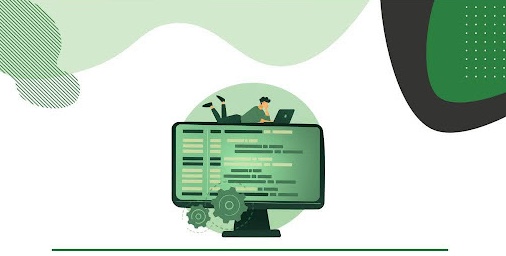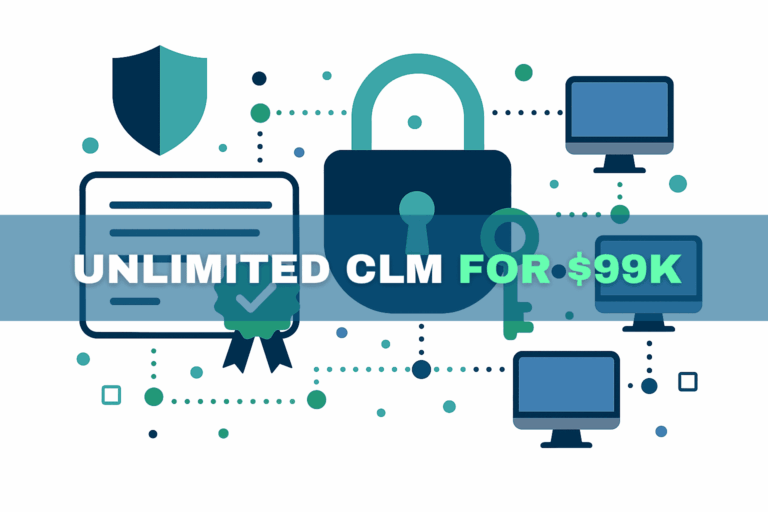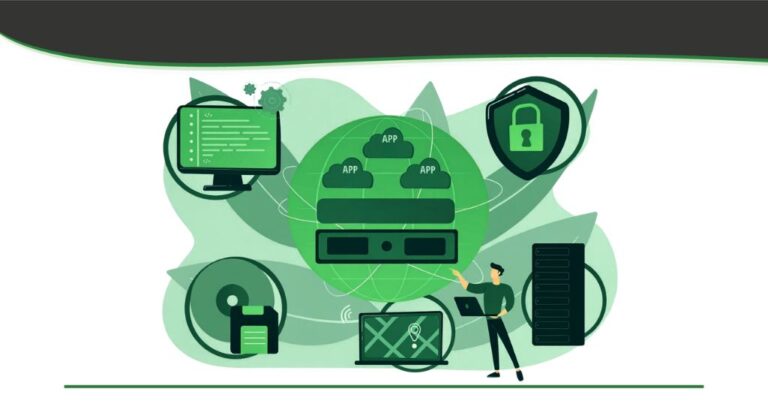End-to-end encryption (E2EE) has become the backbone of digital privacy and data protection. From secure messaging apps to confidential business communications, E2EE ensures that only the intended recipients can decrypt and read the information, not even intermediaries or service providers. But as encryption usage soars, a new challenge is emerging: the rise of quantum computing. Quantum computers promise unprecedented computational power, and with it, the ability to crack many of today’s strongest encryption algorithms. In response, the cybersecurity community, and government agencies like the NSA, are pivoting to post-quantum cryptography (PQC) to safeguard our data for the long term. A cornerstone of this effort is the NSA’s Commercial National Security Algorithm Suite 2.0 (CNSA 2.0), a roadmap for next-generation, quantum-resistant encryption standards. This thought leadership article explores how E2EE is evolving in the era of CNSA 2.0, why quantum-resistant cryptography matters, and how organizations can prepare to implement “quantum-proof” end-to-end encryption in practice.
Why End-to-End Encryption Matters More Than Ever
In today’s interconnected world, E2EE is critical for protecting sensitive information. It means that data is encrypted on the sender’s device and only decrypted on the recipient’s device, with no point in between where the plaintext is accessible. Even if attackers intercept the communication or breach a server, they cannot read the content without the decryption keys. This level of security is not just for spy agencies or tech giants, it underpins everyday privacy for billions of users. Businesses rely on end-to-end encrypted email and file storage to prevent leaks of intellectual property or customer data, and consumers trust encrypted messaging for personal privacy. In short, end-to-end encryption is a fundamental shield against cyber threats and surveillance. However, its strength is entirely dependent on the cryptographic algorithms behind the scenes. And that is where the looming quantum encryption threat enters the picture.
The Quantum Computing Threat to Current Encryption
Classical encryption schemes like RSA and elliptic-curve cryptography (ECC) have safeguarded digital communications for decades. Their security rests on mathematical problems that are practically unsolvable with normal computers. But quantum computers operate on completely different principles and could solve certain problems exponentially faster. In particular, Shor’s algorithm (run on a sufficiently powerful quantum computer) could factor large numbers and compute discrete logarithms, undermining RSA and ECC. Quantum computing is advancing fast, and once it reaches a certain threshold of power, it could crack widely used encryption methods like RSA and ECC. In other words, the very algorithms that make E2EE possible today might be broken in the not-so-distant future by a quantum adversary.
The implications are serious: an eavesdropper who is recording encrypted traffic now could decrypt it later once quantum capabilities are available. This is why experts stress harvest-now, decrypt-later as a real threat, even if your data is safe today, it might be exposed in a few years if we don’t transition to quantum-proof encryption methods. This looming reality has spurred intense research into post-quantum encryption techniques and prompted government action to accelerate the transition.
Enter CNSA 2.0: A Roadmap for Quantum‑Resistant Cryptography
Recognizing the quantum threat, the U.S. National Security Agency (NSA) has published the Commercial National Security Algorithm Suite 2.0 (CNSA 2.0). This is not just another routine update, it’s a comprehensive plan to overhaul cryptographic standards to be quantum-resistant. CNSA 2.0 builds on the prior suite (CNSA 1.0, established in 2016 to replace the old Suite B) by adding new algorithms designed to withstand attacks from both classical and quantum computers. In essence, CNSA 2.0 is about migrating away from algorithms that could be broken by quantum computing before such computers become commercially available.
So, what’s inside CNSA 2.0? Below are some of the key components of this quantum-secure suite:
- Symmetric Encryption & Hashing: Symmetric algorithms (like AES for encryption) are not significantly threatened by quantum attacks, aside from requiring larger key sizes. Accordingly, CNSA 2.0 continues to mandate strong symmetric encryption (AES with 256-bit keys) and secure hash functions. In fact, the only change is adding SHA-512 (alongside SHA-384) to the approved hash algorithms. Using sufficiently large key lengths and hash sizes ensures post-quantum resilience for symmetric cryptography (quantum attacks like Grover’s algorithm can slightly weaken symmetric ciphers, but AES-256 and SHA-384/512 remain robust with adequate key lengths).
- Digital Signatures for Code Signing: For the first time, CNSA 2.0 recommends specific quantum-safe digital signature algorithms for software and firmware signing. These include Leighton-Micali Signature (LMS) and eXtended Merkle Signature Scheme (XMSS), both hash-based signature schemes standardized in NIST SP 800-208. These stateful hash-based signatures have the property of being secure against quantum attacks. NSA encourages organizations to start using LMS and XMSS now for long-term code and firmware integrity, with a goal of exclusively using them by 2030. (One caveat: LMS/XMSS keys require careful one-time use management, solutions must track signature counts to avoid reuse, but they are viable immediately for enhancing supply chain security.)
- Quantum-Resistant Public-Key Algorithms: The biggest shift comes in replacing our public-key encryption and key exchange mechanisms. CNSA 2.0 highlights new post-quantum cryptography algorithms to eventually supplant RSA/ECC for general use. Notably, the NSA has named two frontrunners: ML-KEM for key establishment (key exchange) and ML-DSA for digital signatures. These algorithms were developed in an open competition run by NIST and have been selected for standardization due to their strong security and performance. Once standardized (NIST is expected to finalize standards by 2024–2025), Kyber and Dilithium (or their standardized forms) will become the go-to methods for establishing secure keys and signing in a post-quantum world. In the meantime, hybrid approaches may combine classical and post-quantum methods, but the end goal is clear: move to quantum-resistant cryptography as the default.
CNSA 2.0 not only lists these algorithms but also provides a timeline for adoption. For example, NSA expects that new software and firmware updates begin using the quantum-safe LMS/XMSS signatures by 2025, and that all software/firmware signing be exclusively using post-quantum algorithms by 2030. Other systems are on similar schedules, web browsers and cloud services should start supporting CNSA 2.0 algorithms by 2025 and become fully compliant by 2033, and critical networking equipment like VPNs should be quantum-resistant by 2030. The full transition for all national security systems is expected to wrap up by 2035. These deadlines convey a clear message: the quantum era is coming, and organizations must start preparing now.
Importantly, while CNSA 2.0 is a U.S. government initiative for national security systems, its impact is global. It signals to software vendors, hardware manufacturers, and enterprises everywhere which algorithms will define “best practice” in the near future. Forward-looking organizations are thus wise to align with CNSA 2.0 guidance even if not strictly required to, as it offers a vetted path to quantum-proof encryption across the board.
Post-Quantum Cryptography vs. Quantum Cryptography (QKD)
It’s worth clarifying terminology around “quantum encryption.” When people discuss defending against quantum attacks, post-quantum cryptography (PQC) refers to new algorithms (like those in CNSA 2.0) that run on classical computers but are designed to be resistant to quantum attacks. This is distinct from quantum cryptography, which often means using the principles of quantum physics (as in Quantum Key Distribution, QKD) to secure communications. NSA has pointed out that quantum-resistant algorithms (PQC) can be implemented on existing platforms and rely on mathematical complexity for security – providing confidentiality, integrity, and authentication even against future quantum computers. In contrast, quantum cryptography/QKD involves specialized hardware and has notable limitations. In fact, NSA has stated it does not recommend quantum key distribution for securing national security systems, citing cost and security management issues, and views robust post-quantum algorithms as a more cost-effective and practical solution. In short, the industry consensus is that quantum-proof encryption will primarily come from advances in mathematics (PQC) rather than exotic physics. For organizations looking to future-proof their end-to-end encryption, the focus should be on adopting these emerging post-quantum algorithms, not on quantum gadgets.
Adapting E2EE for a Post-Quantum World
How does all of this relate specifically to end-to-end encryption implementations? The principles of E2EE remain the same, data should stay encrypted from one end device to the other, but the cryptographic plumbing under the hood will evolve. Many E2EE protocols today (for instance, those securing messaging apps or VPN connections) rely on asymmetric key exchanges or digital signatures that could be broken by a quantum computer. For example, popular secure messaging protocols might use an elliptic-curve Diffie-Hellman exchange to agree on keys, or RSA-based signatures to verify identity. To be truly quantum-resistant, those steps will need to use post-quantum algorithms (or hybrid combinations) instead.
One practical approach is the use of hybrid encryption schemes, where classical and post-quantum algorithms are combined. During this transition period, an E2EE system might perform two parallel key exchanges, one with an established algorithm like ECDH and one with a PQC algorithm like Kyber, and use both keys in deriving the final encryption key. This way, even if one method is later broken, the security still stands on the other. In fact, NSA’s CNSA 2.0 guidance anticipates a hybrid era: it notes that encryption systems should be able to support classical, post-quantum, and hybrid schemes in the coming years. The goal is crypto-agility, the ability to swap in new algorithms (or run multiple at once) without disrupting the system or sacrificing security.
That crypto-agility is easier said than done. Many organizations are now grappling with how to modernize their cryptographic infrastructure without breaking their applications or workflows. End-to-end encryption systems are no exception, updating the algorithms in a messaging app or a secure email service requires careful implementation, extensive testing, and sometimes updating client software for millions of users. Moreover, some post-quantum algorithms come with trade-offs: keys and ciphertexts can be larger than their classical counterparts, and signature schemes like Dilithium or stateful hash signatures have different performance profiles. This means that simply “plugging in” a PQC algorithm may impact user experience or system load if not optimized.
Embracing Crypto-Agility and Solutions for the Quantum Era
To navigate these challenges, organizations should start by inventorying their use of encryption – identify where E2EE is used and what algorithms are in play (whether for data in transit, data at rest, or code signing). Next, they should follow the developments from NIST and NSA on approved post-quantum algorithms, and plan a roadmap for migrating or upgrading cryptography in those systems. In many cases, a phased (hybrid) deployment will make sense: introduce post-quantum methods alongside existing ones, monitor performance and compatibility, and then phase out the legacy cryptography as confidence grows. It’s also crucial to stay updated on standards (like upcoming IETF protocols for PQC key exchange in TLS, or new S/MIME standards using PQC) to ensure interoperability.
One key to success is crypto-agility, designing systems and using tools that allow easy swapping of cryptographic components. This is where forward-thinking security products can help. For instance, platforms like Garantir’s GaraTrust are built to provide strong encryption and signature capabilities in a flexible, enterprise-friendly way. GaraTrust is a cybersecurity platform that keeps private keys secured at all times (often in Hardware Security Modules) while still enabling high-performance cryptographic operations across a variety of use cases. In practice, this means an enterprise can centrally protect its encryption and signing keys (critical for E2EE, code signing, etc.) and enforce policies, without slowing down developers or users. Such a platform is designed for crypto-agility: it can support new algorithms and workflows as they emerge, ensuring that adopting post-quantum cryptography doesn’t require reinventing the wheel for the whole organization. In fact, achieving the speed of local cryptographic operations with the security of centralized key storage is a known challenge, and GaraTrust’s approach addresses it by delivering the performance of local keys with the strong protection of HSM-backed keys. This kind of solution exemplifies how organizations can strengthen their end-to-end encryption implementations for the quantum era without sacrificing efficiency.
Beyond tools, organizations should also invest in training and awareness. Developers and IT teams need to understand the differences in PQC algorithms and how to implement them correctly. Misuse of any algorithm (quantum-resistant or not) can undermine E2EE. Additionally, robust key management and storage become even more important if some new algorithms require larger keys or stateful management (as with hash-based signatures).


